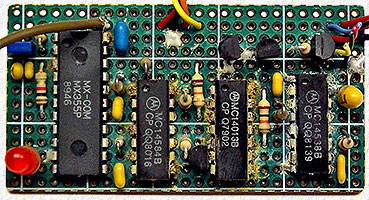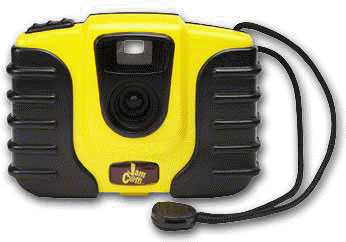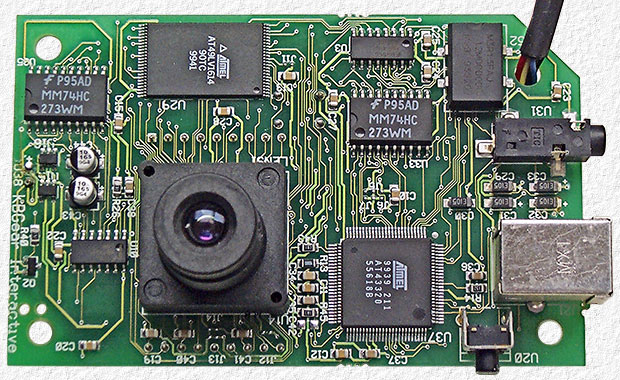BEAR-2 Digital CameraI wanted to try and capture a few photo's from the edge of space with a digital camera and decided to try and add one on BEAR-2 with only 48 hours left before the launch. I didn't yet own a digital camera, a new one of any decent quality & resolution was too expensive to buy and risk, and no with a digital camera was willing to lend me theirs to use. (Remember, this was in 2000 when digital cameras were new, expensive and no one yet had old unused ones laying around to volunteer.) But I searched around and found a JamCam 2.0 for $80 capable of storing up to 8 images of 480 x 640 resolution and proceeded to find a way to operate it remotely and install it on BEAR-2.
The picture quality was initially poor, but with some very fine adjustment of the focus an acceptable picture was obtained. This is sold as a fixed focus camera, but the lens was adjustable once the PC board was removed from the camera case.
Other then for its poor images, the camera was ideal for a balloon application. Everything was on one circuit board and there were no unnecessary extras, like a LCD viewing screen, to add weight and power consumption. The circuit board was only 42.5 grams (1.5 oz) and powered by a 45 gram (1.6 oz) 9 volt battery. Two normally-open push buttons controlled camera operation. Activating one powered up the camera and after about 2 seconds the camera was ready to have the second one activated to take a photo. Then, after 5 minutes of no further activity, the camera will automatically power off. |
|
|
 |
A controller was built to simulate the operation of the two switches each time the cross-band repeater received the appropriate CTCSS tone. This is a photo of the control board, but it wasn't taken, unfortunately, until after the board had been damaged by the alkaline water of the Battle River. |
|
| Everything worked fine during tests on the workbench (when the cross-band repeater wasn't in operation), but an interference problem affecting the cross-band repeater was discovered when it was turned on just before launch. We frantically tracked down the interference which turned out to be the camera (from it's micro & digital circuitry). Unfortunately, there was only one solution and that was to unplug the camera. Oh well, I tried at least, but it wasn't really that big of a disappointment as the camera's picture quality wasn't all that great anyway. | ||
| To BEAR Home Page |

